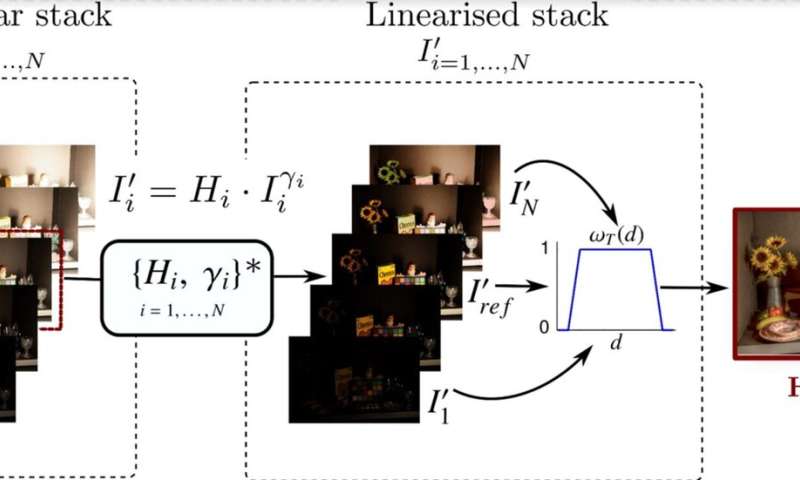Advances in the characterization of high dynamic range images
Source: Universitat Pompeu Fabra - Barcelona
 Outline of the possibilities of the method described by the researchers of the group IP4EC in their work. Credit: UPF
Outline of the possibilities of the method described by the researchers of the group IP4EC in their work. Credit: UPF
In image processing, computer graphics and photography, high dynamic range (or HDR) images are a set of techniques that allow a better dynamic range of luminance between lighter and darker areas in an image than can be achieved by standard digital imaging techniques or other photographic methods.
HDR photography allows obtaining images that are more similar to those seen by the human eye. By adjusting the iris and other methods, the human eye adjusts constantly to adapt to a wider range of luminance present in the environment. The brain continuously interprets this information so we can see in a wide range of lighting conditions. This wider dynamic range allows HDR images to represent more accurately the extensive range of intensity levels found in real scenes, which go from direct sunlight to faint starlight.
Conventional methods for obtaining HDR images are based on two erroneous assumptions. An article published in October in the advanced online edition of Journal on Imaging Sciences of the SIAM (Society for Industrial and Applied Mathematics), shows that conventional methods for obtaining HDR images are based on wrong assumptions, and proposes a method that, based on correct assumptions, boosts the knowledge of this technology. It is described in a study by Raquel Gil Rodríguez, Javier Vázquez-Corral and Marcelo Bertalmío, members of the Image Processing for Enhanced Cinematography (IP4EC) research group at the Department of Information and Communication Technologies (DTIC) at UPF.
As the authors say, "HDR image generation is based on a couple of wrong assumptions. First, that colour channels are independent and, secondly, that camera response function (CRF) remains constant while changing the exposure." One of the main contributions of this paper is to show that these assumptions, which are correct for film photography, in general, do not hold for digital cameras.
As a result of these false assumptions, results of multi-exposure HDR methods are less accurate, and when tone-mapped they often present problems like hue shifts and colour artefacts.
Another contribution by this paper is to propose a method to stabilize the CRF while coupling all colour channels, which can be applied to both static and dynamic scenes, which yields artefact-free results that are more accurate than those obtained with other technologies.
| }
|